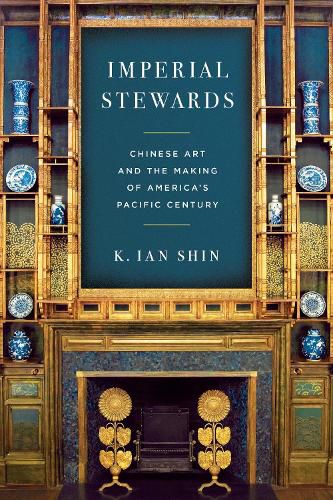Readings Newsletter
Become a Readings Member to make your shopping experience even easier.
Sign in or sign up for free!
You’re not far away from qualifying for FREE standard shipping within Australia
You’ve qualified for FREE standard shipping within Australia
The cart is loading…






From the Gilded Age to World War II, elite collectors and museums in the United States transformed from owning a smattering of Chinese porcelain as curios to possessing some of the world's largest and most sophisticated collections of Chinese art. Imperial Stewards argues that, beyond aesthetic taste and economics, geopolitics were critical to this transformation. Collecting and studying Chinese art and antiquities honed Americans' belief that they should dominate Asia and the Pacific Ocean through the ideology of imperial stewardship-a view that encompassed both genuine curiosity and care for Chinese art, and the enduring structures of domination and othering that underpinned the burgeoning transpacific art market.
Tracing networks across both the Pacific and the Atlantic, K. Ian Shin uncovers a diverse cast of historical actors that both contributed to US imperial stewardship and also challenged it, including Protestant missionaries, German diplomats, Chinese-Hawaiian merchants, and Chinese overseas students, among others. By examining the development of Chinese art collecting and scholarship in the United States around the turn of the twentieth century, Imperial Stewards reveals both the cultural impetus behind Americans' long-standing aspirations for a Pacific Century and a way to understand-and critique-the duality of US imperial power around the globe.
$9.00 standard shipping within Australia
FREE standard shipping within Australia for orders over $100.00
Express & International shipping calculated at checkout
From the Gilded Age to World War II, elite collectors and museums in the United States transformed from owning a smattering of Chinese porcelain as curios to possessing some of the world's largest and most sophisticated collections of Chinese art. Imperial Stewards argues that, beyond aesthetic taste and economics, geopolitics were critical to this transformation. Collecting and studying Chinese art and antiquities honed Americans' belief that they should dominate Asia and the Pacific Ocean through the ideology of imperial stewardship-a view that encompassed both genuine curiosity and care for Chinese art, and the enduring structures of domination and othering that underpinned the burgeoning transpacific art market.
Tracing networks across both the Pacific and the Atlantic, K. Ian Shin uncovers a diverse cast of historical actors that both contributed to US imperial stewardship and also challenged it, including Protestant missionaries, German diplomats, Chinese-Hawaiian merchants, and Chinese overseas students, among others. By examining the development of Chinese art collecting and scholarship in the United States around the turn of the twentieth century, Imperial Stewards reveals both the cultural impetus behind Americans' long-standing aspirations for a Pacific Century and a way to understand-and critique-the duality of US imperial power around the globe.